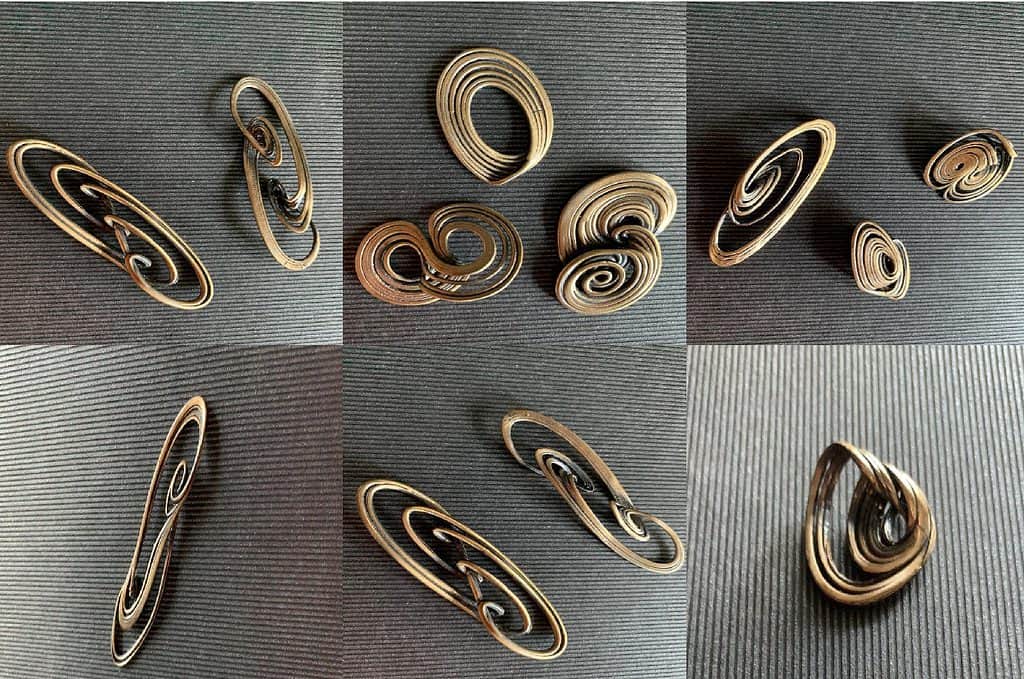
Science doesn’t deal only with predictable phenomena like electricity, gravity or chemical reactions. There are also many non-linear processes that can’t be controlled or predicted, such as weather and turbulence. This is where Chaos Theory enters, which explains the behavior of dynamic systems that are very sensitive to initial conditions.
Researchers from the University of Bologna found a way to turn the complex elements of chaos theory into actual jewelry. The shapes were based on the Chua circuit, an electronic system that was the first proof of chaos. Instead of an ordinary circuit, which produces an oscillating current, Chua’s circuit never repeats.
“These chaotic configurations are complex structures that had never been observed before,” Eleonora Bilotta, study author, said in a statement. “The depictions of such structures are strikingly beautiful, continually shifting when the point of view is changing. Jewelry seemed to be the best way to interpret the beauty of chaos.”
Jewelry and chaos
Chaos theory is the science of surprises, the unpredictable, and the nonlinear. Unlike the behavior of a pendulum, which follows a predictable pattern, a chaotic system can’t be predicted because of its nonlinear processes. They are very sensitive to initial conditions. A small change in its conditions can have a big impact on the outcome.
This is exemplified by the butterfly effect. It evokes the idea that a small butterfly flapping its wings in New Mexico, to name a place, could hypothetically cause a hurricane in China. Or it could not. The very surprising element of the butterfly effect is that it’s impossible to predict whether a small system could lead to chaotic behavior.

The idea of chaos was first described by French mathematician Henri Poincaré and was then continued by mathematician Edward Lorenz. He was studying a model of Earth’s weather on a computer and ended up with very different results. He found a high sensitivity to the initial conditions, with one rounding error leading to different weather behavior.
This was also picked up by Leon Chua, who created the Chua circuit in 1983 – a simple electronic circuit that produces a waveform that never repeats. It was Chua’s circuit that inspired the researchers to create the jewelry. The chaotic forms proved difficult to manufacture with traditional methods so they ended up using a 3D printer instead.
“Seeing the chaotic shapes transformed into real, polished, shiny, physical jewelry was a great pleasure for the whole team. Touching and wearing them was also extremely exciting,” said Bilotta in a statement. “We think it is the same joy that a scientist feels when her theory takes form, or when an artist finishes a painting.”
The researchers said the jewelry can be used as an educational tool, giving students the possibility to develop artistic creativity and scientific knowledge. In the future, they would like to explore other representations of chaos, using spheres instead of lines. They also would like to develop an exhibition that can be then adapted for international museums.
The study was published in the journal Chaos.


